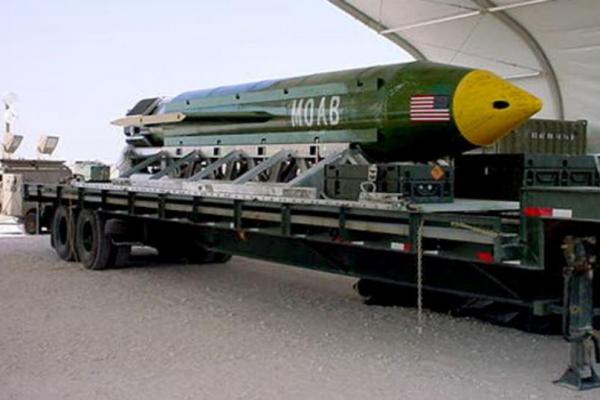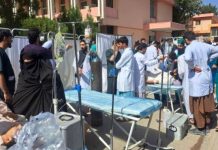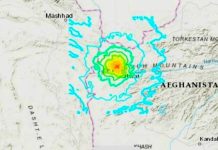
April 14 (UPI) — The top U.S. military commander in Afghanistan on Friday defended the Trump administration’s decision to use the Pentagon’s most powerful non-nuclear bomb against a terrorist target near Kabul.
The U.S. military strategically dropped a 21,600-pound GBU-43/B Massive Ordnance Air Blast bomb from a C-130 Hercules on what it called the “right target” in eastern Afghanistan on Thursday. The device, the largest non-nuclear bomb in the Pentagon’s arsenal, is known colloquially as “the mother of all bombs.”
The bombing targeted various Islamic State positions and infrastructure, Pentagon officials said. On Friday, some news media asked why the U.S. military settled on that particular bomb for the strike in Nangarhar province, just southeast of the Afghan capital.
“This was the right weapon against the right target,” Gen. John W. Nicholson, Jr., commander for U.S. forces in Afghanistan, said Friday at a news conference. “It was the right time to use it tactically against the right target on the battlefield.”
The 30-foot-long GPS-guided “smart bomb”, developed during the second Gulf War in 2003, has enough destructive force to wipe out an area roughly the size of nine city blocks. It delivers an 18,700-pound BLU-120/B warhead, which is made of H6, a mixture of cyclotrimethylene trinitramine, TNT and aluminum.
Thursday’s strike killed 36 Islamic State militants, according to the Afghan Ministry of Defense. The bomb also destroyed three underground tunnels, weapons and ammunition. The Pentagon previously said there were hundreds of militant fighters in the area.
Both U.S. and Afghan officials said no civilians were harmed in the strike.
Thursday marked the first time the powerful bomb had ever been used in combat. Former Afghan President Hamid Karzai accused the United States of using Afghanistan as a testing ground for the weapon, and called the bombing “an inhuman and most brutal misuse of our country.”
Nicholson said thorough surveillance was conducted in the area to ensure no civilian casualties.
“Let me be clear — we will not relent in our mission to fight alongside our Afghan comrades to destroy [the Islamic State in Afghanistan] in 2017,” he said. “There will be no sanctuary for [the terror group] in Afghanistan.”
Thursday’s was the second high-profile bombing in a week ordered by the Trump administration in the region. Last week, the president ordered 59 Tomahawk cruise missiles into a Syrian airfield in response to an alleged chemical attack against civilians by President Bashar al-Assad two days earlier.
It wasn’t clear Friday whether Trump also ordered the Afghan strike, but Nicholson said he has been given some “latitude” in operational control. Trump called the bombing “another successful job.”
“One of the gravest threats to religious freedom remains the threat of terror,” the president said in a video message Friday marking the Easter weekend. “Life always triumphs over death. Freedom overcomes oppression. And faith extinguishes fear.”
An Afghan resident living about a mile from where the bomb fell told CNN he heard an “extremely loud boom that smashed the windows of our house.”






